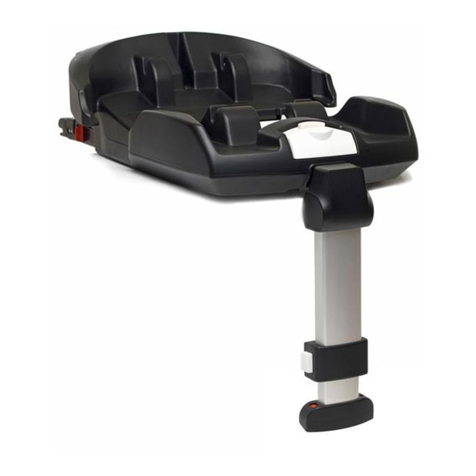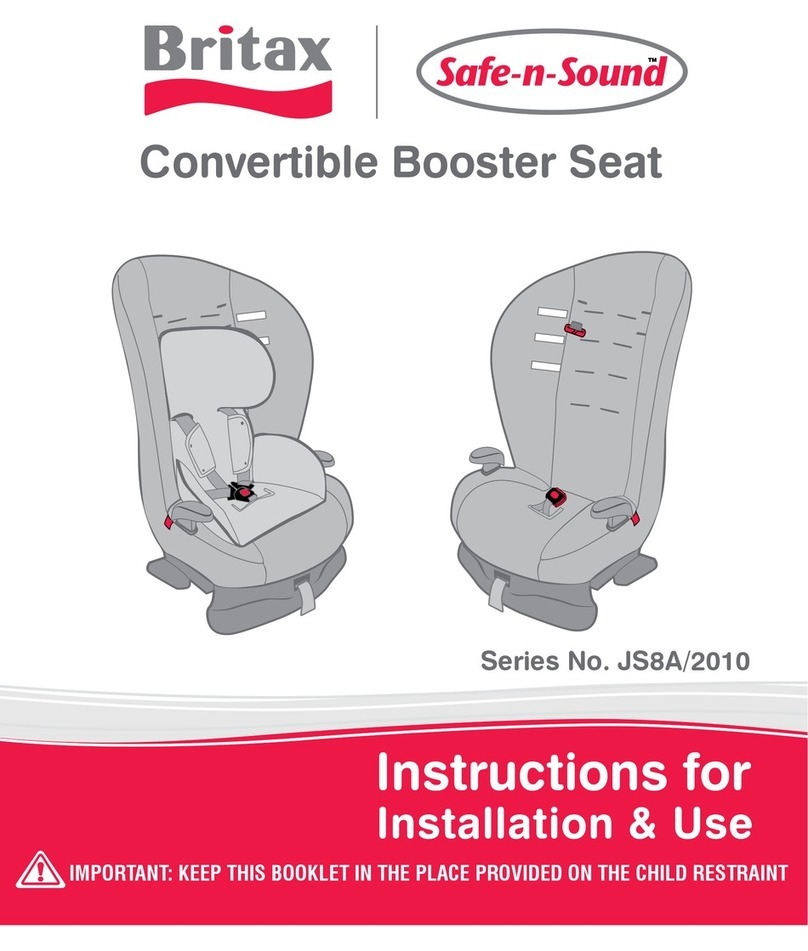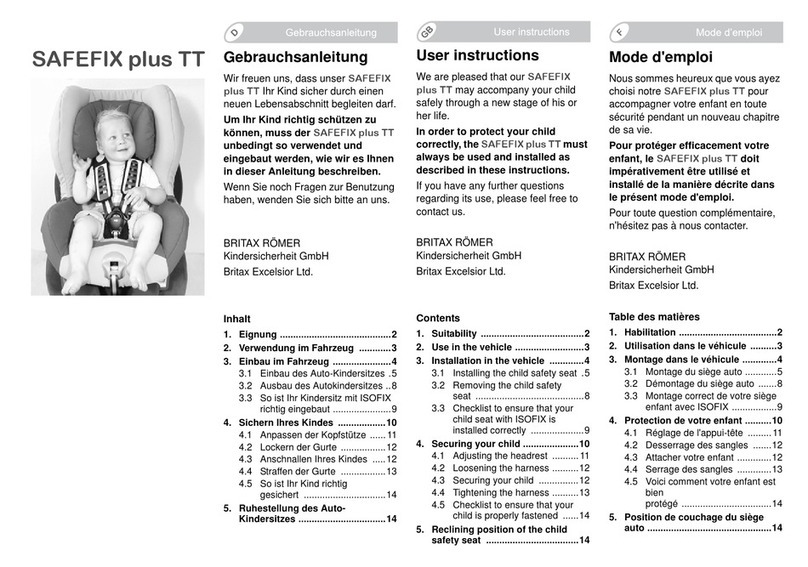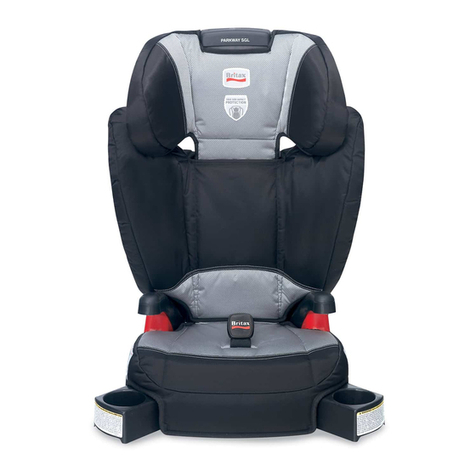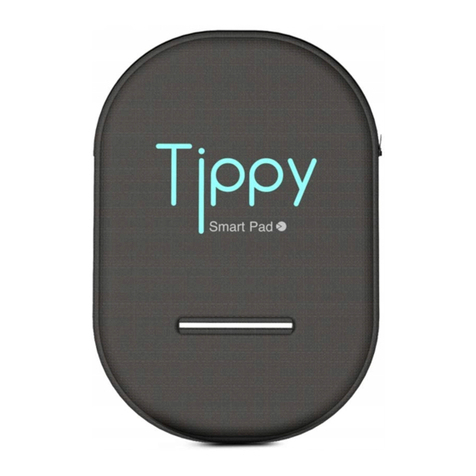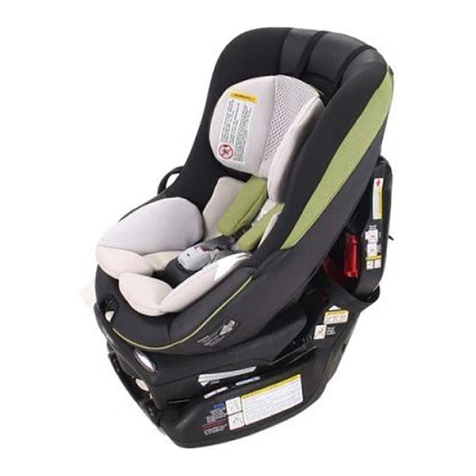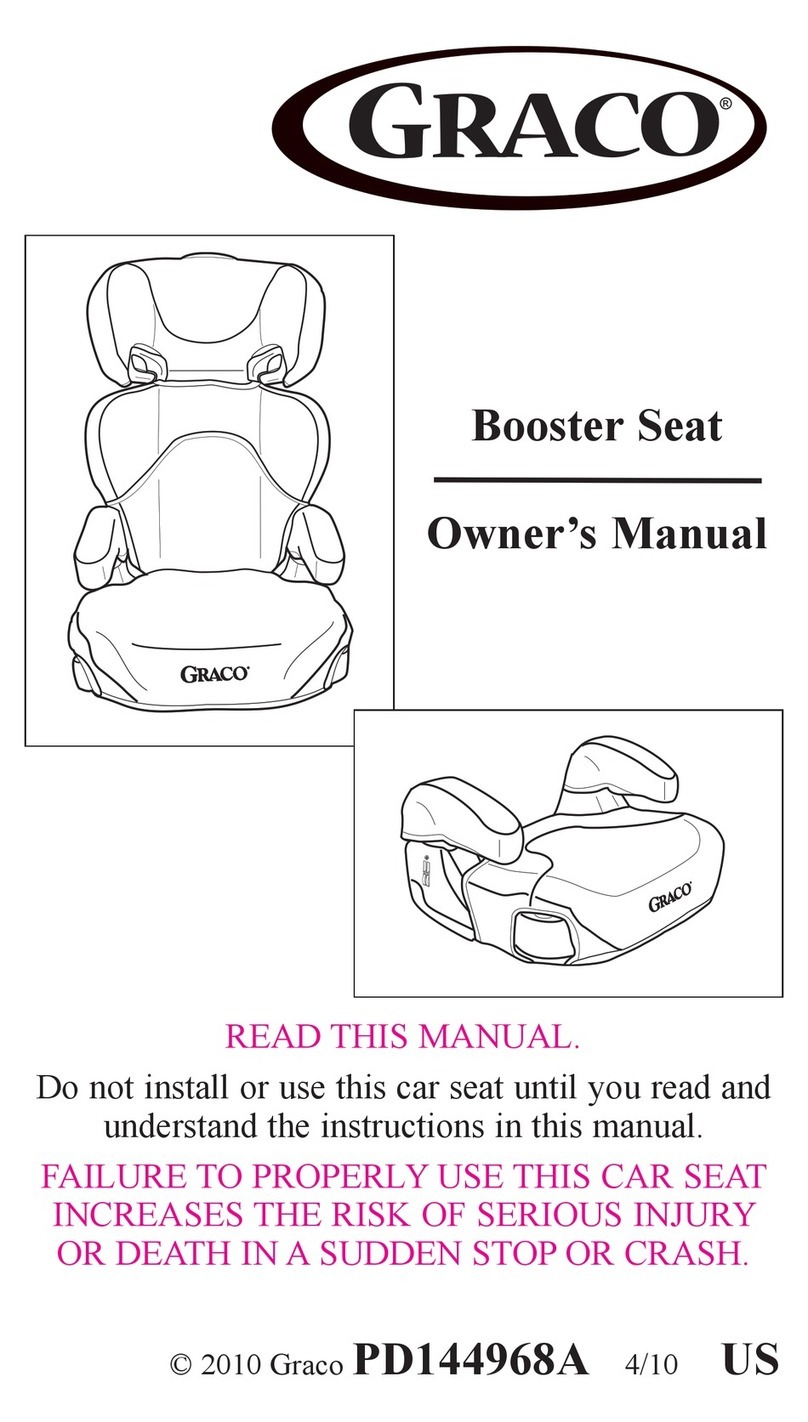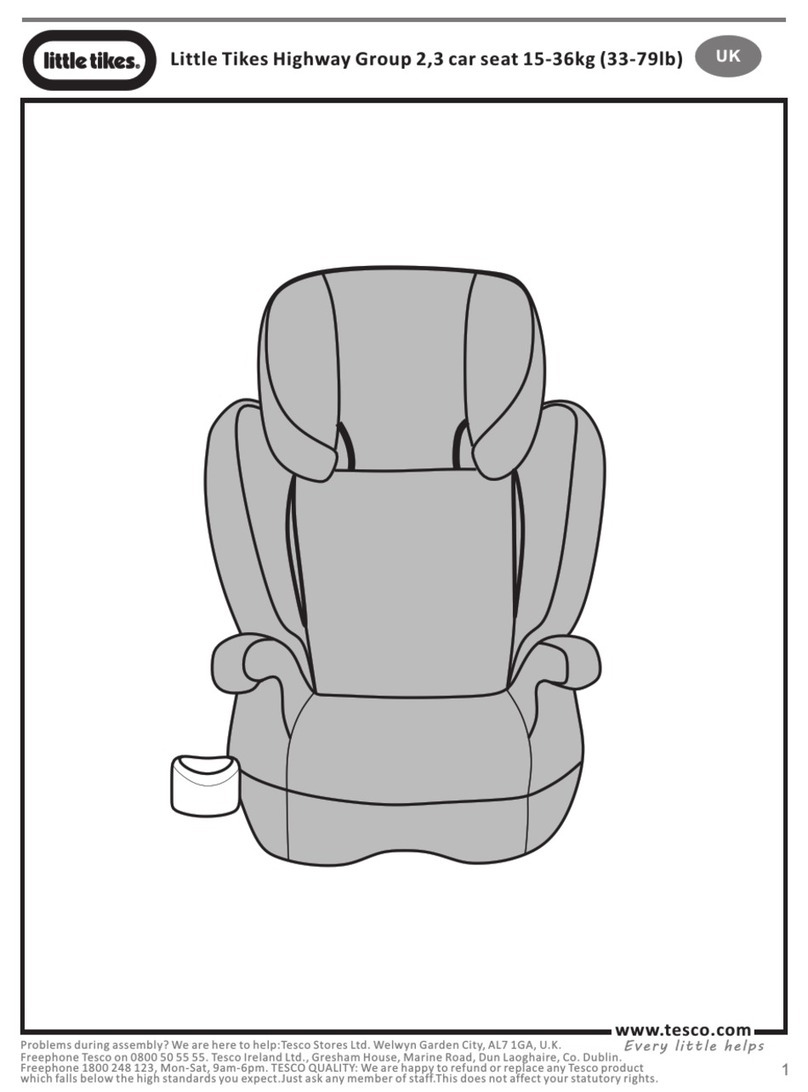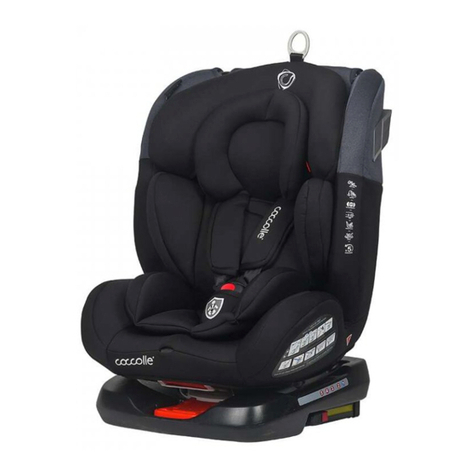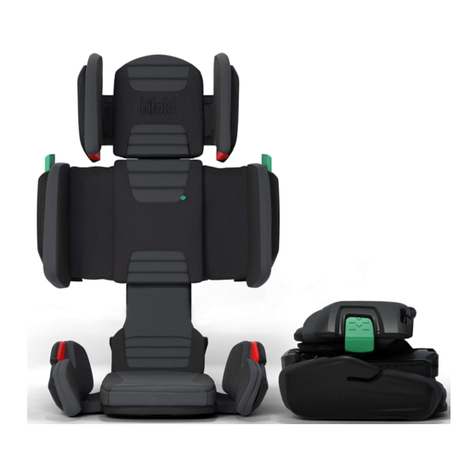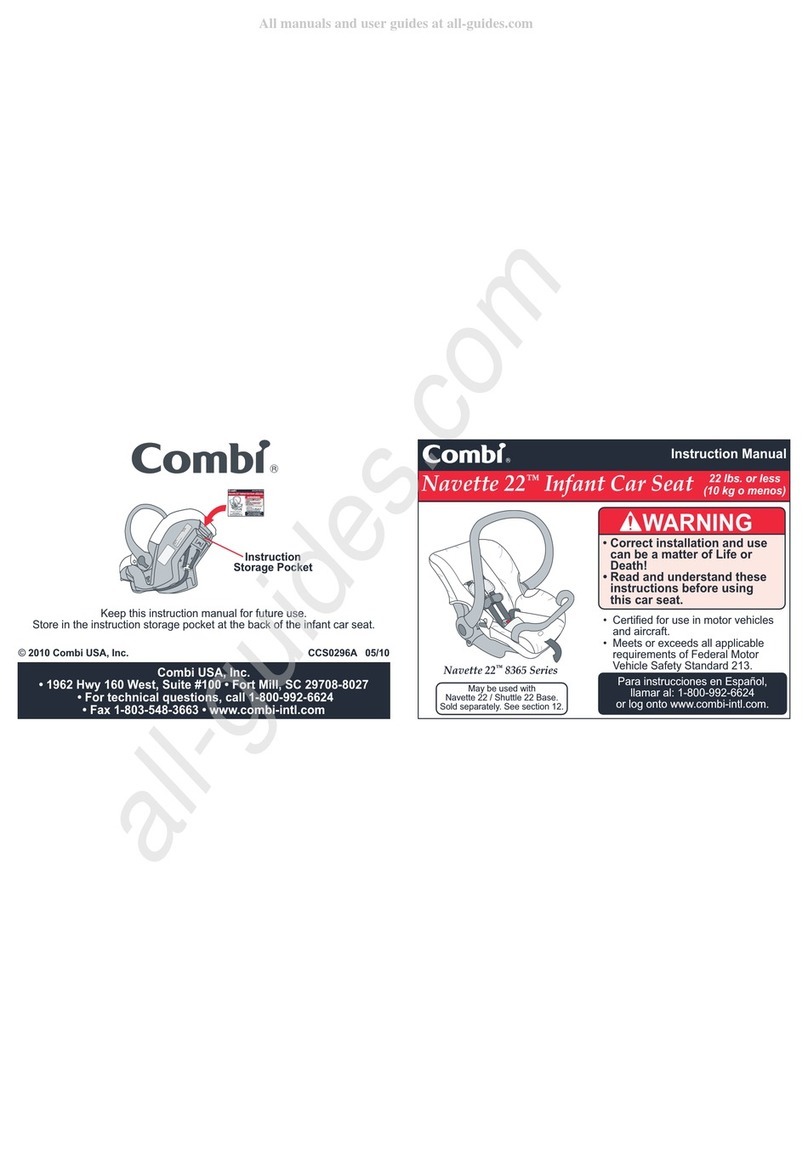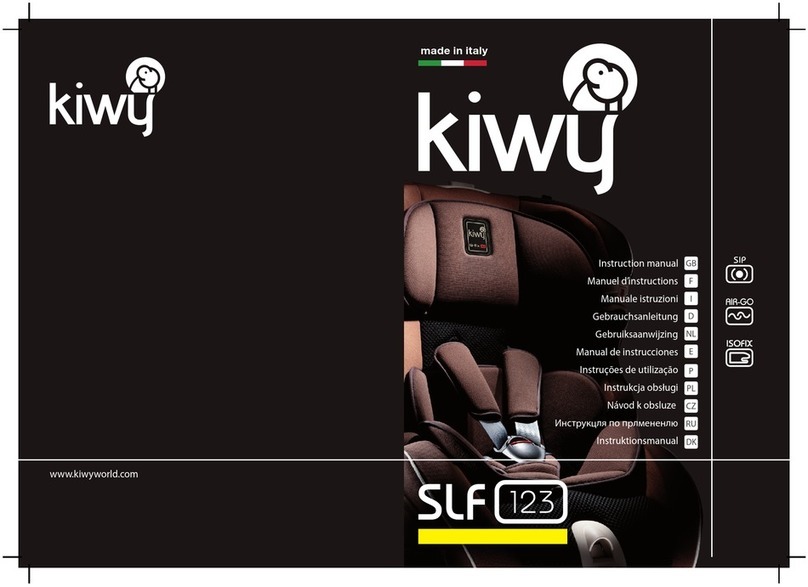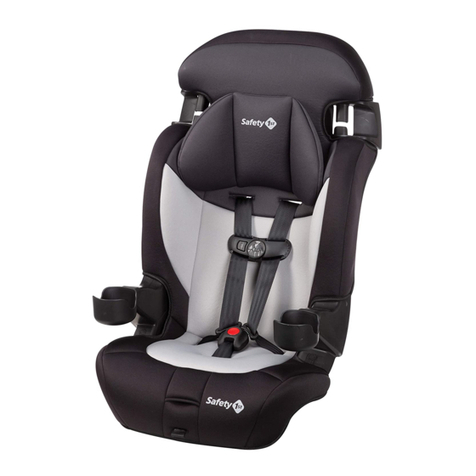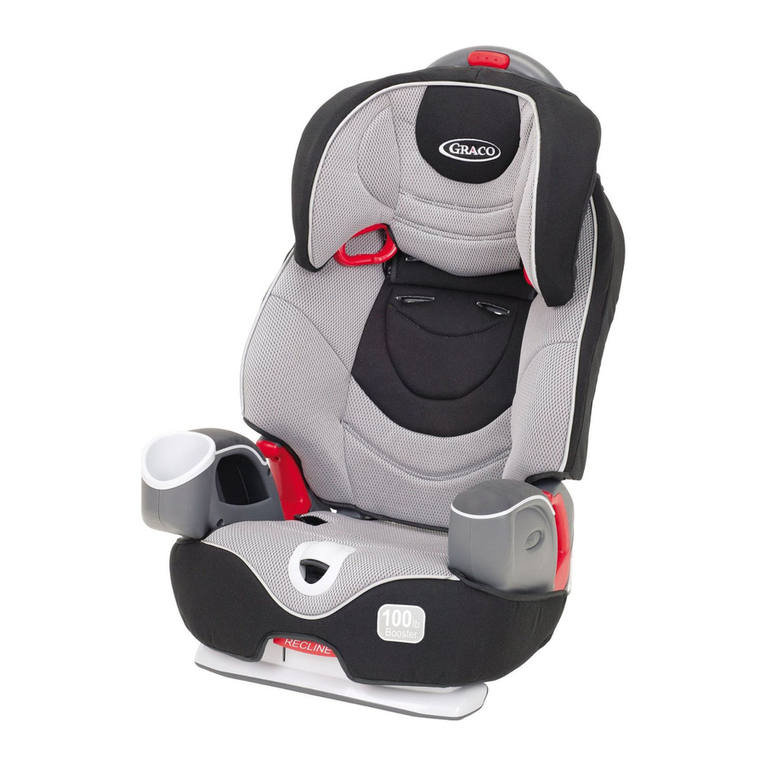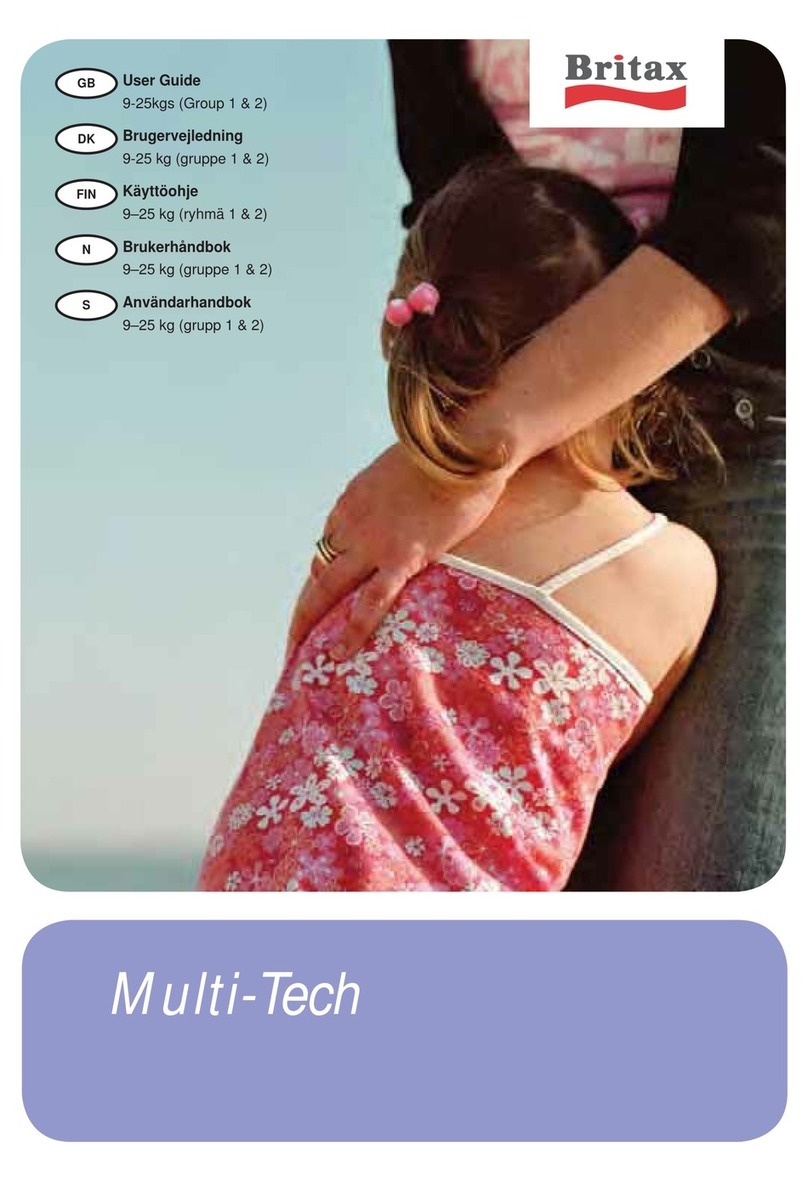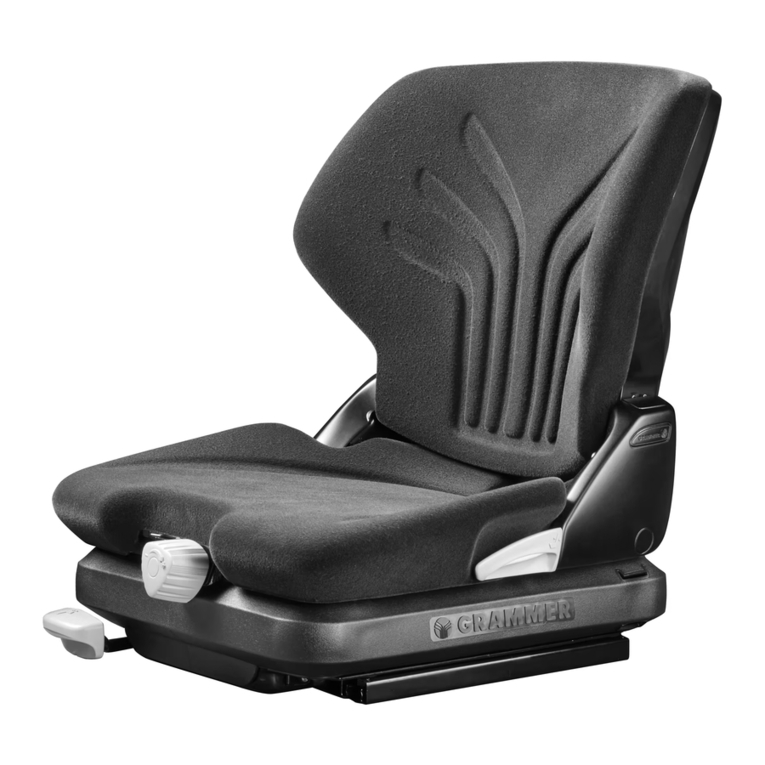Evenflo Gold SECUREMAX User manual

©2018 Evenflo Company, Inc.
OWNER’S MANUAL
KEEP FOR FUTURE USE.
25701480 11/18
SMART REAR-FACING
INFANT CAR SEAT
WARNING
To reduce the risk of serious injury or
death, read this owner’s manual prior to
installing and using this child restraint.
SECUREMAXTM
Rear-facing*
1.8 to 15.8 kg
(4 to 35 lbs)
43 to 81 cm
(17 to 32 in.)
*See page 6 for complete
requirements.

2 3
More children are killed every year as
passengers in car crashes than by any other
type of injury.
To reduce the risk of SERIOUS INJURY or DEATH,
read this owner’s manual and your vehicle owner’s
manual before installing and using this child
restraint.
Using a child restraint makes a big difference. By
properly using this child restraint and following
these instructions (and the instructions that
accompany your vehicle), you will greatly reduce
the risk of serious injury or death to your child from
a crash.
Do not be misled by the commonly used term
“safety seat”; no restraint system can prevent all
injuries in all crashes. Many properly restrained
adults and children are injured in motor vehicle
crashes, including relatively minor crashes.
A properly used child restraint is the best way to
minimize injuries to your child and to increase the
chances for your child’s survival in most crashes.
U.S. Regulatory Notice
This child restraint meets all the requirements of
Federal Motor Vehicle Safety Standard 213.
Symbol Legend
Airbag Symbol – Alerts you to important
information about airbag safety.
LATCH Symbol – Alerts you to important
information about LATCH safety.
Aircraft Symbol – Alerts you to important
information about aircraft safety.

4 5
Table of Contents (TOC)
Child Requirements ................................................ 6
Premature Infant Use .............................................. 8
Warnings .............................................................. 10
LATCH Warnings................................................... 22
Safe Practices........................................................ 28
For Recall Information for U.S. Customers............. 29
Motor Vehicle/Aircraft Usage ................................ 31
Base Features........................................................ 32
Child Seat Features ............................................... 34
Using the Handle.................................................. 36
Installing the Canopy............................................37
SafeZoneTM Load Leg ............................................38
Installation Checklist with Base ............................. 44
Installing the Base with the
Lower Anchor Connector Assembly ................... 46
Installing the Base with the
Vehicle Seat Belt/Shoulder Belt .......................... 54
Installing the Base with the
Vehicle Seat Belt ................................................ 58
Installation Checklist without Base ....................... 62
Installing the Carrier with the
Vehicle Seat Belt/Shoulder Belt .......................... 66
Installing the Carrier with the
Vehicle Seat Belt ................................................ 68
Adjusting the Recline ........................................... 70
Checking the Recline with Base ............................ 71
Placing Your Child in the Carrier .......................... 73
Changing the Crotch Strap Position...................... 76
Changing the Waist Strap Position........................ 80
Using the Infant Body Support.............................. 86
Securing the Child in the Carrier .......................... 87
Removing the Child from the Carrier ................... 92
Using as an Infant Carrier...................................... 93
LATCH Storage .................................................... 95
Storing Your Instructions....................................... 96
SensorSafeTM ......................................................... 97
Securing Your Child Restraint in Aircraft.............. 107
Installing the Carrier WITHOUT
the Base in Aircraft........................................... 108
Replacement Parts .............................................. 114
Care and Cleaning.............................................. 116
Proper Disposal of this Child Restraint................. 117
Warranty............................................................. 118

6 7
CHILD REQUIREMENTS
Warning: Failure to follow these Child
Requirements could result in serious injury or
death.
This child restraint is designed for use by children
in rear-facing orientation only. To use this child
restraint properly, children MUST meet the size
and age requirements below. In addition, Evenflo
recommends consulting with your child’s physician
before allowing your child to transition from a
rear-facing to forward-facing child restraint.
The American Academy of Pediatrics (AAP)
recommends keeping children rear-facing until
they reach the maximum height or weight for
their child restraint in rear-facing orientation.
Additionally, some states’ laws require children to
be rear-facing until age 2.
Accordingly, you will see this guidance reflected
in the Child Requirements. Please review any
applicable local, state or provincial laws related to
child passenger safety before installing and using
this child restraint.
Rear-facing Use
• No restraint can guarantee absolute protection from
injury in every crash.
• 1.8 to 15.8 kg (4 to 35 lbs)
• 43 to 81 cm (17 to 32 in.) and top of child’s head
is at least 2.5 cm (1 in.) below the top of the child
restraint seat back.
Harness straps at, or just
below, the shoulder.
At least 2.5 cm
(1 inch)
IMPORTANT: Once your child exceeds any of the
size requirements above, they MUST discontinue
use of this child restraint.
Child Requirements

8 9
PREMATURE INFANT USE
Before using this child restraint for preterm or low birth weight
infants, ensure the Child Requirements are met and follow the
guidelines in this section.
According to the U.S. National Highway Traffic Safety
Administration, a properly installed child restraint reduces
the risk of death by over 70% for infants involved in crashes.
Federal Motor Vehicle Safety Standard (FMVSS) 213 establishes
design and dynamic performance requirements for child
restraint systems. However, the standard has no minimum
weight limit and does not address the special medical needs
of preterm or low birth weight infants. To ensure that preterm
and low birth weight infants are transported safely, the
guidelines published by the American Academy of Pediatrics
(AAP) in Pediatrics 2009;123:1424–1429 must be followed.
All children should ride rear-facing in the vehicle as long as
possible. Preterm and low birth weight infants are at additional
risk of breathing difficulties and heart problems when placed
in a child restraint. Evenflo requires that the evaluation
recommended by the AAP be conducted for all infants born
earlier than 37 weeks and all newborn infants who weigh
less than 5 lb at birth before their first car trip to check for
breathing difficulties or heart rate problems when traveling in a
rear-facing child restraint.
The AAP recommends that appropriate hospital staff observe
your infant in the child restraint for a period of 90 to 120
minutes or the duration of travel, whichever is longer. This
period of observation must be performed with the infant
properly positioned as described in these instructions and with
the child restraint placed at an angle that is approved for use
in the vehicle. The hospital staff will check for any breathing
difficulties or heart rate problems. Your child’s pediatrician will
let you know if there are any special considerations for travel.
The number of trips and the duration of time the infant is
seated in the child restraint should be minimized. A caregiver
should ride in the back seat to monitor the infant during travel.
You can learn more about the AAP’s recommendations
for observation of newborns and the guidelines for safe
transportation of preterm and low birth weight infants, as well
as other resources for parents and medical professionals, at
https://www.healthychildren.org/english/safety-
prevention/on-the-go/Pages/default.aspx
Premature Infants
• DO NOT use this or any other child restraint with a premature
infant until after consulting your doctor. Premature infants
may have difficulty breathing when in a sitting position.
Premature Infant Use
Table of contents
Other Evenflo Gold Car Seat manuals

